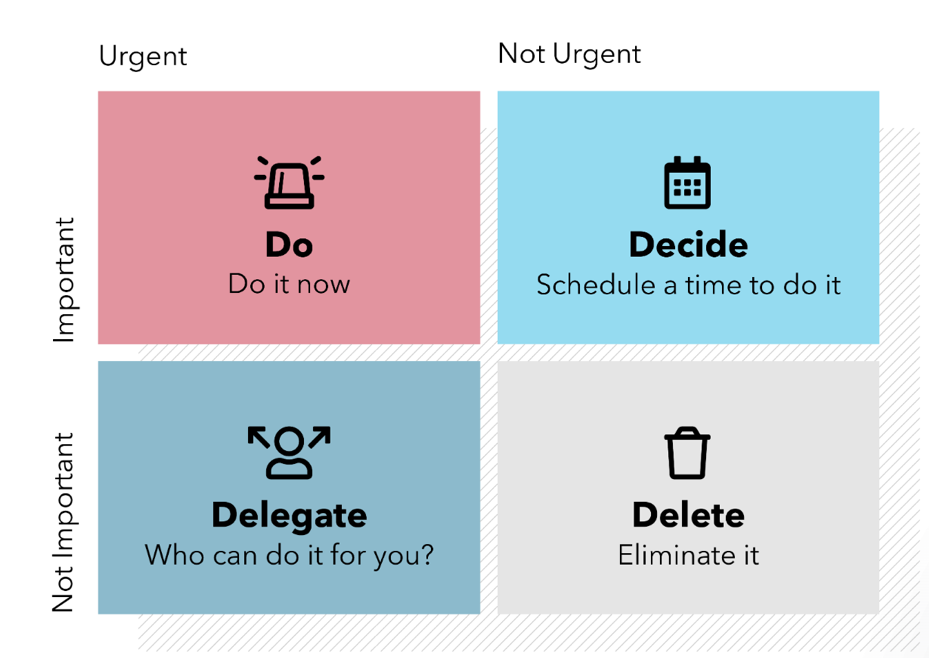4 Time Management Lessons Every Kid Should Learn
Time. The one finite resource we all can’t seem to get enough of. Most of us can agree that there is room for improvement in how we manage our time, as we are bombarded with distractions in today’s fast-paced world. As technology continuously advances, society’s pace of life follows suit.
Instilling proper time management skills at an early age will benefit your little ones in the long run. Not only will it make them better spouses (who doesn’t love a punctual significant other?), it will make them better employees and more considerate people.
Another benefit of gaining time management skills is the ability to cope with stress effectively. According to the NHS, anxiety disorders in children are developed by being around anxious people, school-related issues like exam stress, and many other reasons. By implementing proper time management techniques, some stress can be relieved from your child’s plate.
What are the 4 time management lessons every kid (and adult) should learn?
Examples are shared to inspire practical ways to teach kids these lessons. Depending on your child’s age, you can decipher how to approach this. The beauty of these skills is that they are universal - helpful in having kids finish chores along with preparing for tests. Using 2 made-up examples, Jimmy (age 5) and Rachel (age 16 who works a part-time babysitting job) can help guide you maneuver this topic.
1. Prioritize.
Source Spica
The first step, and most important step, is to identify what are the highest priority items. One easy way to visualize this is using the Eisenhower matrix. This matrix is named after the U.S.’s 34th President, Dwight D. Eisenhower, who invented this method to focus on his most important tasks.
Tasks needed to get done are placed in one of four boxes, based on importance and urgency. The box that is both important and urgent is the highest priority and should be completed first. The second highest priority to focus on is the important but not urgent box, to be placed on a calendar/agenda to get to it later. The unimportant tasks can either be deleted, delegated, or rescheduled if possible.
Examples:
Jimmy (age 5) has to remember to bring a toy for show & tell next week, but also has baseball practice tonight. Together, you draw the Eisenhower matrix on paper and help him understand that the game is both important and urgent as it is tonight, but the toy choice is important but not urgent.
Rachel (age 16) has a Biology test tomorrow and volunteered to cook dinner for her family tonight. She sits down with you to place these tasks in the matrix but feels that both tasks are urgent and important. You advise her that dinner is important but not urgent since there are plenty of leftovers. Rachel realizes she still needs extra study time and comes up with the solution to cook tomorrow instead.
2. Minimize distractions.
Now that priorities have been established, you can set up a distraction-free environment so that your child can focus. A few distraction culprits include devices like phones and TVs, noise, toys, and friends/family.
One solution is to establish clear time blocks and a place for them to focus.
Time - You can establish a time block (3-5 PM) as a no-screen zone, where devices are under your supervision and out of sight of the child.
Place - A playroom is a good place to avoid for kids to study because tempting toys are lurking around. Find an area that is quiet enough to focus, but not too comfortable that they may doze off (avoiding couches/beds if possible).
Examples:
Jimmy (age 5) can do his homework after school in the dining room. You can gather his favorite toys and devices to be put away so he can focus.
Rachel (age 16) decides to do her hardest homework/studying on babysitting nights after the kids go to bed. She decides to turn off the TV and move away from the kitchen to not be tempted to snack instead of study.
3. Plan/schedule with an Agenda.
Now it’s time to shift gears on WHEN all of these tasks will take place. Having an agenda or calendar is a great way to organize tasks. This step will be simple since tasks have already been prioritized using the Eisenhower matrix. Additionally, this will provide transparency for you as the parent to know what is on your child’s plate and how to help guide them.
Examples:
Jimmy (age 5) can have a small notebook planner with monthly calendar pages. You can help him fill it in with any important tasks and appointments. A bonus is that this will help him learn the days of the week and calendar.
Rachel (age 16) can have a larger agenda, with a weekly/daily view in addition to monthly. This can help her manage her daily tasks and babysitting work schedule.
4. Batch similar tasks
One way to maintain focus during tasks is batching similar tasks. Batching, or completing all similar tasks at once, skyrockets productivity by minimizing multi-tasking and increasing focus.
Examples:
Jimmy (age 5) can batch his homework and house tasks. He can work on his homework after school in his distraction-free zone and before bed, he can pick up all his toys at once.
Rachel (age 16) can batch her reading and writing tasks. If she has to read a chapter for Biology and a chapter for English, she can do those during the same time block. She can work on her essay and other writing assignments after that.
As parents, we hope to raise future adults who are punctual and dependable. The best way for kids to learn time management is to have it modeled at home. Make sure a calm and punctual environment is the norm at home to help reinforce these skills. We all have hectic and rushed days, but this should be the exception, not the rule.
Implementing the 4 time management skills will strengthen your child’s confidence to consistently meet deadlines and cope with the stresses of everyday life.






